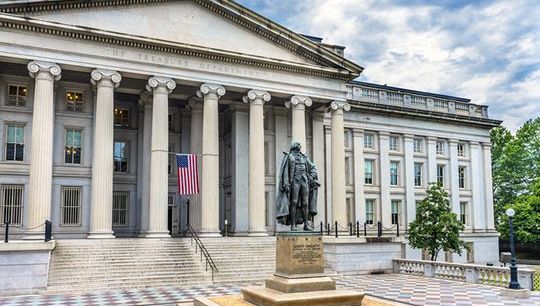'Hard times come to hedge funds'…again?
By Cédric Kohler, Head of Advisory, Fundana
Published: 27 January 2017
In 1970, a Carol Loomis article in Fortune, titled 'Hard times come to hedge funds', predicted the end of hedge funds. Almost 50 years later, some critics of the industry may think this title could not be more appropriate given today’s environment.
Recent press articles are again predicting the end of the hedge fund industry, with reasons including allegedly geriatric returns over the last two years, 2016 seeing the largest outflows since 2009, or potentially one of the worst years on record in terms of fund closures. Is the industry at the beginning of its decline or is it, on the contrary, consolidating to become stronger? An overview of a few key trends helps us answer this 3 trillion-dollar question.
Performance erosion
Whether in absolute terms or in alpha terms, the industry’s current performance is far below its best years. While investors have been used to 8% to 10% of alpha in the past, they have had to adjust to 4% to 5% in recent years. Of course, markets have become more efficient over time and as David Harding from Winton says, “alpha is what you get paid for making markets efficient”. Additionally, too many smart guys (since 1996, Hedge Fund Research recorded a net increase of 7,565 funds) chasing the same opportunities has contributed to this decline. The combination of a low growth environment and zero interest rate levels has also made the market very narrow (think 'FANG' stocks and fewer arbitrage opportunities). Further, managers’ information edge has also declined with much easier access to information.
As a result, it is clearly harder to find alpha - and when you find it, it’s much lower - but there is still some. Note that 5% of alpha per year for a decade still yields a 40% cumulative return, and typically, this return comes with a much lower volatility than equity indices.
The rise of the quants
With more than $1 trillion in assets under management (AuM) across quantitatively-managed hedge funds, mutual funds and smart beta products, these strategies have drastically changed the investment landscape. Note that this is 5% of the overall asset management industry, double what it was in 2012. Over the last few years the amount of data creation has exploded, reaching 2.5 quintillion bytes every day. The combination of this data with quantitative tools has enabled the proliferation of factor investing and the birth of the quantamental strategy. A traditional stock picker who ignores his exposure to factors, such as momentum, is a sure candidate for bottom-quartile returns. Conversely, quants can now model a company’s earnings stream alone, get customers’ online activity data and all of this without meeting any CEOs or CFOs and calculated much faster than any fundamental analyst could.
Inefficiencies disappear quickly and the time horizon for traditional hedge fund managers has been compressed. However, strategies which do not rely on historical data have not been impacted as much. For instance, distressed investing where managers take a company through a restructuring process in the courts, will be harder for quants to handle: you actually have to go to the court.
AuM: Less is more
With $3 trillion in AuM and about 8,500 funds, the hedge fund industry is at its all-time high. However, as of October 2016, $50 billion of outflows were recorded year-to-date, the largest amount since 2009. 530 funds had closed year-to-date by then, on pace to be the record year for hedge fund closures.
What can we expect going forward? As in many industries, the largest hedge funds dominate and 10% of the managers control 90% of the AuM worldwide. Since 2009 the largest players have grown even bigger. Consequently, performance suffered and investors’ patience seems to have reached its limit. Half of the $50 billion redemptions were in funds with more than $5 billion in AuM. Many legendary managers have decided to quit.
At the other end of the spectrum, 50% of the managers have less than $100 million in AuM. A challenging investing environment, paired with an increased regulatory burden, is shortening most of these funds’ life spans. Many prefer to call it a day.
Thus, while it is indeed likely that the industry will see fewer managers going forward, the overall industry AuM could continue to grow. Current average hedge fund allocations are typically between 0% and 10%, which is still much lower than pre-crisis. In addition, given the low expectations for other asset classes, hedge funds have plenty of room to grow just like they did back in 2002 after the equity market collapse.
Manager lifecycles: Going, going, gone!
Hedge fund managers, like many companies, have their own lifecycle. From start-ups with young and hungry entrepreneurs, those with the best returns emerge to become confirmed managers. The latter manage enough AuM to make a decent living and yet are not so big as to make the portfolio or the team unmanageable. In short: it’s the sweet spot. The best ones, and perhaps the greediest, morph further into the large stage. Many of these funds thought they could maximize performance and assets at the same time. For many, this large stage is also their last. Going, going, gone!
While this manager lifecycle has been known to hedge fund allocators for a long time, what has changed since the crisis is the speed of that cycle. Said differently, a fund life span has shortened significantly and is closer to 5-7 years than the previous 10+ years. The markets are so volatile since the crisis that many funds with good and consistent returns over a three-year window will see their AuM explode once they reach the magical billion-dollar mark. The only exceptions are those managers with the self-discipline to close their funds to new investments. This AuM growth will at best dilute returns and at worst kill the fund. Deploying such large amounts in such short periods of time is extremely difficult either because of liquidity or simply because of the enormous work needed to find new opportunities.
Thus, successful hedge fund investing going forward requires higher monitoring and turnover than we typically had pre-crisis.
Towards a better industry
The industry is indeed changing for the better. Yes, alpha has eroded but it is still there and the best investment talents still have great incentives to join hedge funds. Yes, the rise of quants has impacted several hedge fund strategies and managers need to adapt to it. However, strategies with less data available will thrive. Yes, there will probably be fewer managers in the next decade, however, this is not necessarily a bad thing and those who remain will operate closer to the sweet spot stage. Yes, the manager life span is shorter, but this only means that portfolio turnover must be higher, not that hedge fund investing is pointless.
And perhaps most important, the opportunity set ahead of us seems exceptional. Simply put, hedge fund performance has been impacted by almost two years of risk reduction in the multi-PM hedge fund platforms. That flow has now reversed and platforms are aggressively building risk again. Typically, hedge funds do well during such periods and these cycles usually last several years.
As Mark Twain once quipped, “rumors of my death are greatly exaggerated”. The same applies to the comments of many of the hedge fund industry's critics. And we all know what happened to the industry after that Fortune article in 1970…
To contact the author:
Cédric Kohler, Head of Advisory at Fundana: [email protected]









